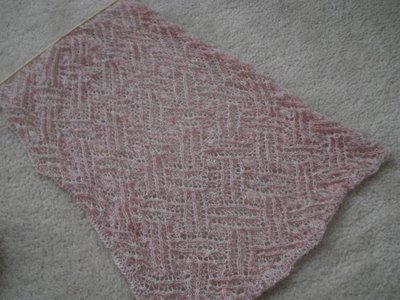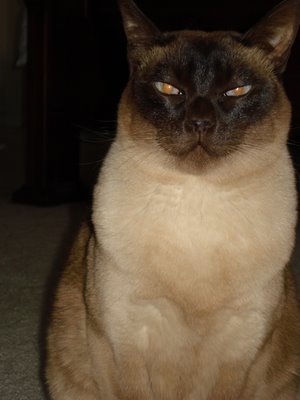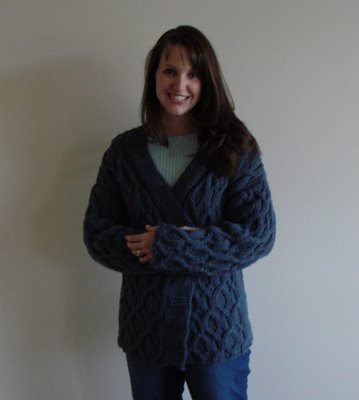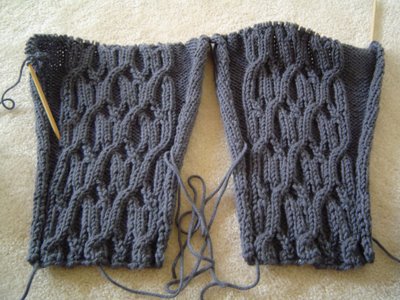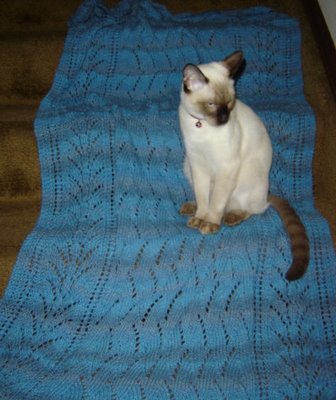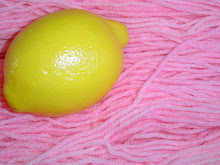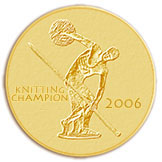
Houston, we have Cast On! In the last week I have made some decisions, done some charting, and actually cast on and gotten started knitting. I decided that I did like the idea of a traditional design kind of morphing into the Cherry Blossom petals part of the stole - but I decided not to use a traditional knitting pattern. I used a traditional
Sashiko pattern and charted it for knitting. The design I chose is a basket weave design and I chose this one for a couple of reasons. I wanted a geometric design with strong angles to balance the more random and organic look I am wanting for the petals. Basketweave designs are found all over the world and I thought the interweaving elements of the motif would play along with the idea of the Cherry Trees being given as a gift of friendship from Tokyo to Washington, DC.*
I sat down and charted the design out and since I know that making a chart from something in your head is something that some of you are interested in, I'll go into more details about how I do this. I like to work with a paper and pencil because personally, working directly on the computer tends to get in the way of my creativity. (I have noticed that since I started blogging, I'm better at thinking creatively while on the computer than I used to be, but for designing, I'm more Old School.) I use graph paper to draw the design on. I'm comfortable using knitter's graph paper or regular graph paper, but knitter's graph paper will give you a more accurate idea of the scale of the design. Here is a link for custom sized knitter's graph paper you can print out - just enter your gauge over 4 inches/10 cm squared and it will draw it for you. I usually only chart the right side of the design since all of my designs so far (and my lace knitting, so far) are purled on the wrong side. You do have to keep in mind that the actual design will be twice as tall as it looks on the graph paper if you only chart RS rows. If you're working a particularly intricate design, you might want to chart all the rows. I begin by drawing in all of the Yarn Overs - I chart them as O's, since that is how they'll look. One thing you have to watch with YO's is that while you can stack them vertically, you can't put them one right after another horizontally - two YO's right next to each other form a Double YO, not two separate, decorative holes. In designing this motif, I knew what it should look like in my head, but didn't have a definite idea of where the repeats would fall so I charted the design over about 3/4 of the paper. Once I had the design drawn in - several repeats each direction, then I took a pencil and drew lines around the repeat areas. I figured out where I wanted the bottom of the pattern to fall at the bottom edge of the stole and drew a line across this, then I figured out where the design should fall at both the left and right edges (as its knitted) and drew a line in both places. I found the top of the repeat (in this case 16 right side rows make up the repeat - 32 rows total) and drew a line there. Then, with the part of the chart I would actually be using defined, I could figure out where the horizontal repeats would fall and figure out how many extra stitches I would need to get all the way to the second edge in the pattern. This chart is a repeat of 16 stitches + 9 stitches wide. Once I had all these lines on the page that was mostly full of the YO design, I started adding decreases - since the actual working part of the charts was defined, I only had to figure decreases for that part - not the whole page. Each YO has a decrease, either right slanting, left slanting, or a double decrease. You can use the directions of the decreases to further define your pattern. One thing to keep in mind when adding decreases is that if you only add one type of decrease (say, K2tog) over the whole design - you will get biasing. You have to balance K2tog's with SSK's to prevent biasing. I don't worry about counting to make sure there's an equal number, I just make sure they are both used. This basketweave design has strong diagonal elements and I used decreases to strengthen these lines. If you're completely lost here, grab some graph paper, draw a simple geometric design of YO's and work through the charting, finding repeats, and adding decreases - its easier to do than explain. Once I had the chart fully drawn out, with YO's, decreases, and repeats all defined, I went into the spreadsheet program on my computer and charted it. You have to mess around with column width and row height to get a grid, but then you can just add your symbols to the squares, run a column of row numbers up the right side and draw some dark lines to define the repeats. Then I copy and paste the chart into a word processor program, print it up and I've got a working chart. I could of course knit from my hand drawn chart and I do when I'm knitting something for myself and not writing a pattern. I plan to turn this stole design into a pattern so I wanted to get the chart into the computer and knit from the actual chart that will appear in the pattern so I could double check it for accuracy.
OK, so now that the chart is ready to go, all I have to do is decide how wide to make the stole and then I can get started. I know from the experience of knitting and designing the other stoles that I want to shoot for around 100 stitches wide. This number gives a nice width for a stole when its worked in laceweight yarn. Remember how the repeat is 16 stitches + 9 stitches for this design? If I work 5 repeats of the design I have 89 stitches (5 x 16 = 80 + 9 = 89). That gets me pretty close, but I also have to add some edging stitches. I like to use garter stitch at the edges - its simple, makes a nice edge, doesn't roll, and its used pretty traditionally for shawls and stoles. If I add 3 stitches to each side I have 95 stitches (3 + 89 + 3 = 95). Remember how 2007 is the 95th year of the National Cherry Blossom Festival? Cool, huh!* So I'm ready to cast on, I just have to decide what kind of edging I want for this end of the stole. I've decided to make the design asymmetrical and I have a pretty good idea of what I want to use to finish the cherry blossom petals end of the stole - it goes along with the organic, petals blowing in the wind, softness of the delicate blooms and all that (I'm not ready to share what I'm thinking yet, just know that there is a plan). I have to balance that end with what I use at this first end. I need something simple that works with the basketweave design, but it has to have as much visual weight as the second end will have or the stole will look lopsided. I liked the idea of a simple, wide band of garter stitch - it works nicely with the side edges, it works with the geometry of the basket weave design, and its stretchy - but garter stitch alone wouldn't balance the second end. I emailed Mindy and got approval for - BEADS! If you look very carefully at the cast on edge of the stole above you can just barely see beads. They are clear with silver lining and they look like individual raindrops at the edge of the stole. I actually cast on with beads (don't worry, I'll give full directions in the pattern) so they would be at the bottom edge and I love the way they look. Its just enough sparkle to make this end of the stole interesting, but it doesn't distract from the rest of the design. As I was working the cast on edge, I was reminded of Fortuny gowns. Very small beads were added to the lower edges of his garments to give the extremely lightweight silk a bit of body and weight, making them hang on the body properly. While the alpaca yarn I'm using has plenty of drape, the beads are adding just enough weight to drop the work away from the needles as I knit. Anyone who has knit a shawl before knows that the first few rows are the hardest, when the work is too lightweight to drape and sits very close to the needles.
*I was an Art History major in College and as anyone who has taken even a basic class in Art History can tell you, the BS runs thick through the discipline. While I'm sure that some symbolism was used by artists as they composed their works, if everything that Art Historians found symbolic was part of the conscious decision making process by every artist, all creativity would have been stifled pretty quickly. Because of this background, however, any time I can tie things together symbolically in a design, (the woven pattern of the basket weave symbolizing the weaving together of friendship of two nations, the 95 cast on stitches symbolizing each year of the National Cherry Blossom Festival) I do. It appeals to the deep streak of BS that I've always had and only developed even deeper in college.
 When I'm not knitting on Mindy's Christmas Stole, I've been spinning some more of the Corridale roving (Beach from Kendig Cottage-mine doesn't have any of the shell pink color that's shown on the website). I'm almost finished with the second bobbin of singles. (I have 12 ounces total of this colorway and I'll spin 4 bobbins of singles before I ply.) I don't have any definite plans for this yarn, I guess I'm just spinning it for the sake of spinning, and having some color. My original plan was to make it two ply yarn and just let the colors fall where they wanted, but a tiny voice in my head has been suggesting Navajo plying to keep the colors separate. I don't know yet if I'll listen to the tiny voice or not - this is not the voice in my head that I HAVE to listen to or I end up regretting it - that's a completely different voice. This is more the little Hmm, That's Not A Bad Idea voice. Yes, I have more than one voice in my head, don't you?
When I'm not knitting on Mindy's Christmas Stole, I've been spinning some more of the Corridale roving (Beach from Kendig Cottage-mine doesn't have any of the shell pink color that's shown on the website). I'm almost finished with the second bobbin of singles. (I have 12 ounces total of this colorway and I'll spin 4 bobbins of singles before I ply.) I don't have any definite plans for this yarn, I guess I'm just spinning it for the sake of spinning, and having some color. My original plan was to make it two ply yarn and just let the colors fall where they wanted, but a tiny voice in my head has been suggesting Navajo plying to keep the colors separate. I don't know yet if I'll listen to the tiny voice or not - this is not the voice in my head that I HAVE to listen to or I end up regretting it - that's a completely different voice. This is more the little Hmm, That's Not A Bad Idea voice. Yes, I have more than one voice in my head, don't you? 